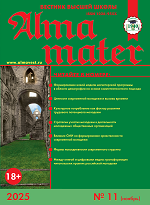http://dx.doi.org/10.20339/AM.08-16.104
S.B. Murtazova is Senior lecturer at Karshi Engineering Economic Institute
e-mail: sahodat@mail.ru
Presented is the author’s analysis in history of dastan art, i.e. unique historical heritage of Uzbekistan. Dastan is epic product in folklore or literature. As a rule, dastans are folklore or literature working of any heroic myths, legends or fairytale events. Dastan, describing fantastic and adventurous situations, not infrequent characterized is by complicated topic, hyperbolized situations, and idealized acting heroes. Centuries-old tradition of dastan art is developing successfully in modern Uzbekistan. The article tells about nowadays acting schools of dastan in Uzbekistan on territories of Khorezm, Kashkadarya, Surkhandarya and Karakalpakstan, also characterizes their representatives, i.e. dastan performers (bakhshi), whose art is being very highly valued by the people.
Key words: Uzbek musical heritage, dastan, folklore, music, genre, tradition, art, makom, dukon, creativity, preceptor, bakhshi, song, dutar, Khorezm, Kashkadarya, Surkhandarya, Karakalpakstan, poet, singer, musical abilities, schools of dastan.
References
- Zarifov, H. From history of Soviet folkloristic. In: Tasks of Uzbek Soviet folklore. Tashkent, 1970, p. 264.
- Kakhkharov, A. New dastans (on the basis of repertoire of folk bahshi of Kashkadaria and Surkhandaria). Tashkent, 1985, pp. 4–5.
- Matyokhubov, B. Performers of dastans. Ghulistan, 1995, no. 4.
- Otoyer. Melodies of Khoresm. Ghulistan, 1990, no. 6, pp. 16–17.
- Khamidov, H. Essays in history of culture of our region from the 16th up to the 19th centuries. Tashkent, 2009, pp. 86–87.
- Ergashev, O., Khushmuradova, I. Sovereignty and folklore. Tashkent, 2006, pp. 64–68.











.png)






